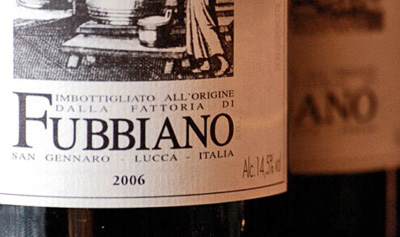
Winemaking at Fubbiano
Fubbiano’s 20 hectares of vineyard produce around 100,00 bottles a year, making it one of the largest producers in the Lucchesia.
This will increase to probably around 150,000 bottles over the next few years as newly replanted vineyards begin to reach maturity.
The first wine was bottled at Fubbiano in 1968, the same year that the DOC Colline Lucchesi was introduced.
Labels have come and gone in the meantime, such as the Novello Fubbianello that is no longer produced, but the classics have been a constant since then.
The majority of the grapes produced at Fubbiano are red, divided among four different labels: the Fubbaino red DOC, the San Gennaro DOC reserve, the “Super Tuscan” I Pampini, and the newest label in the family, First Love.
Two white wines complete the family the Fubbiano Bianco DOC and a pure Vermentino as well as two dessert wines a Vin Santo and in 2010 for the first time an Aleatico, both produced in small quantities. An Aqua Vitae as also produced in minimal quanties, a fragrant pure grape spirit derive from the fermentation of grapes rather than grape skins or pomace as is the case with grappa.
Web site: www.fattoriadifubbiano.it




